Eating it up on the Expo Line
March 28, 2012
They dubbed it the Pastrami Express. When the Red Line subway came to Langer’s MacArthur Park neighborhood in 1994, offering a convenient way for downtown workers to get their pastrami-on-rye fix, it touched off a transit-driven boom for the legendary delicatessen, family-owned since 1947.
After an inaugural weekend of free rides on the new subway, deli owner Norm Langer showed up Monday and was met with a miraculous sight: customers, by the hundreds.
“I had 500 people on a waiting list,” he recalled. It was a welcome turnaround for a business suffering at the time from demographic shifts and high crime in the neighborhood. “My light at the end of the tunnel was the Red Line,” he said. “If it didn’t open, we would have closed.”
Today, business is better than ever in a revitalized neighborhood, Langer said, continuing to marvel at the Red Line effect. “It’s phenomenal. And it gets better over the years because there are more lines that tie into it. We’ve had a great resurgence of our customer base because of it.”
Now a new generation of restaurateurs, business owners and cultural institutions is looking to another much-anticipated public transit project—the Expo Line—and hoping that the gravy train will soon be pulling up to their establishments, too.
Make that the chili, hot dog, fresh fish and cobbler train.
Earlez Grille is among those preparing for an influx of newcomers when the first Expo trains roll out on April 28.
“It’s a great thing,” said Cary Earle, who owns the establishment with his brother Duane and mother Hildred. The Grille’s location—beside the Crenshaw station and a few stops away from the University of Southern California—is prime, he said. “It’s going to give us a lot of USC students.”
First-time visitors should try the basics, he said: a beef hot dog with mustard and cooked onions, washed down with a Playa’s punch, a non-alcoholic mixture of red fruit drink and lemonade.
The restaurant, on the former site of Jack’s Chili Factory, also specializes in chili made from Jack’s original recipes. On a recent Expo Line test run for the media and elected officials, Metro CEO Art Leahy said he’s looking forward to eating there once Expo opens. “It will now be a hot downtown lunch spot,” he predicted.
Another potential hot spot is Mel’s Fish Shack on Jefferson Boulevard, a short walk from Expo’s Farmdale station, which is slated to open later in the spring, after the initial rollout.
“I pray that it will bring us a windfall of customers,” owner Georgette Powell said, sitting at the counter of her tiny eatery, where cooks like Jerry Rhodes fry up corn flour-dusted catfish, snapper and shrimp along with healthy innovations such as grilled salmon salad and tilapia wrap with dill sauce.
“I have felt isolated for many years” in terms of the accessibility of her location, said Powell, 44, who learned the business from her late father, Mel. “The train makes us more desirable.” Powell hopes eventually to expand Mel’s to other locations and perhaps start a community-based culinary school to train aspiring cooks in the “healthy soul food niche.”
Some, however, are skeptical about the train’s ability to deliver new customers.
“Will anybody walk over two blocks, when they’re traveling from Point A to Point B? I don’t think so,” said Carolyn McMillan, co-owner of The Kobbler King on Jefferson, near the Crenshaw station. Those who do make the trip, however, should try one of the savory cobblers like chicken or seafood, she said, with berry cobbler for dessert. “Peach and apple are good, don’t get me wrong, but I like the berries,” she said.
Initially, the Expo Line will travel between Metro’s 7th Street Center downtown and La Cienega/Jefferson. Some of its marquee destinations are big, internationally known venues—Staples Center, USC, the county Natural History Museum, the Coliseum. The California Science Center is expecting a “significant increase” in attendance, buoyed in part by the Expo Line and also by anticipated blockbuster shows devoted to Cleopatra, and, later, the Space Shuttle Endeavour.
But smaller venues, like the Lula Washington Dance Theatre near the Crenshaw station, are also hoping for a boost in visibility. “The main impact is that people will go by our place and see us,” said Executive Director Erwin Washington, who noted that many of the troupe’s dancers and students will also have an easier time getting to the theatre on the Expo Line.
At the California African American Museum, served by the new line’s Expo Park/USC station, director Charmaine Jefferson said staff at the admission-free museum would also have a better commute to work. In addition, having a light rail option should help overcome one of the major downsides of its location near the Coliseum: patrons who stay away on sporting event game days. “You’ll have guests who’ll say, it’s going to be a zoo; I don’t want to go there,” she said.
The rollout of the first phase of the Expo Line will culminate with the opening of the Culver City station at Venice and Robertson, expected this summer.
At Culver City’s quirky Museum of Jurassic Technology, archivist and administrator Hana van der Steur said the train will be a benefit for current visitors and supporters—as well as those who have yet to discover the collection of oddities and treasures.
“We’re basically ecstatic to have it,” she said. “We’re really hoping that people will take advantage of it. The museum is the kind of place that you really have to visit in order to get a good sense of it.”
Among owners of Culver City’s many eateries, there’s some uncertainty about what the station opening will mean for the area, already known as a dining destination for many on the Westside, said Ken Kaufman, the owner of Rush Street and City Tavern, who also serves on the board of the Culver City Downtown Business Association.
“We’re not sure of it. We know that the culture of L.A. is a car culture, and we don’t know how quickly people will adapt to using the train,” he said. “We don’t expect it to have a significant effect, but we hope we’re wrong.” He said a much bigger impact is expected four years from now—when Expo Phase 2 opens from Culver City to Santa Monica, giving traffic-challenged Santa Monicans a quicker route to dinner.
“As someone who takes reservations,” he said, “everybody knows that people who come from Santa Monica are always a half hour late.”
For a sampling of other attractions along the Expo Line route, check out Metro’s Destination Guide.
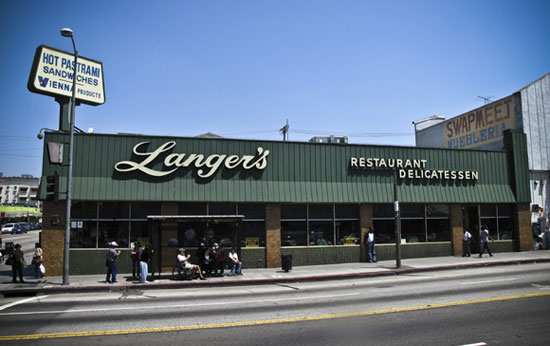
Langer's Deli says the Red Line saved its business in the days of high crime in the MacArthur Park neighborhood.
Posted 3/29/12




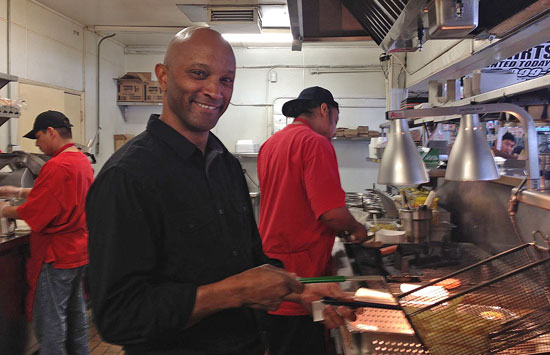
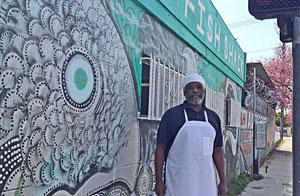
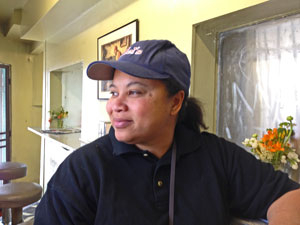
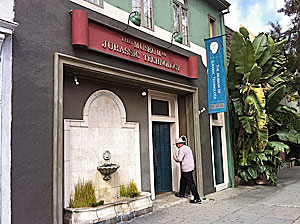








 405 bridge work causes a stink
405 bridge work causes a stink

